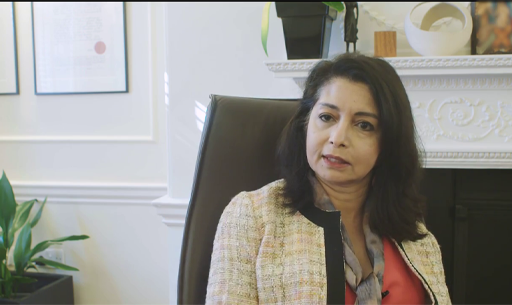2.1 Comparing medical approaches
Psychiatry is a branch of medicine that deals with mental health. Doctors such as general practitioners and psychiatrists draw on models of illness to assess a patient and provide a diagnosis. The biomedical model forms the basis of modern medical practice, although there are few doctors nowadays who would not also draw on social and psychological explanations of mental ill health.
Biomedicine explains health in relation to biology. It attaches importance to learning about body structure (anatomy) and systems (physiology) and understanding mechanisms like the circulation of blood, hormone functions and the workings of the brain. This view offers a particular and distinctive way of ‘seeing’ and understanding health in relation to the body. Certain tests establish what is wrong and medicines are given as a cure or to alleviate symptoms, or surgery repairs or replaces defective body parts.
The biomedical model tends to focus attention on the individual, not groups of people or the health of society more generally. Under this model, health services are geared mainly towards sick people and high value is placed on specialised medical services. Doctors and other qualified experts act as gatekeepers to services. The main function of a health service is remedial or curative, aimed at getting people back to productive lives.
In the next activity you’ll consider two contrasting medical approaches.
Activity _unit5.2.2 Activity 5: Different viewpoints
Step 1: First, think back to George’s appointment with the GP. What aspects of the consultation would suggest that the GP was taking a biomedical viewpoint? Do you think it’s important that George has the opportunity to express how he feels?
Discussion
We noticed aspects that indicated the service was geared towards George as the ‘sick person’. He offered a medical diagnosis, and the treatment recommendations were aimed at George as an individual – either medication or seeing the nurse at school. It appeared that George may not have been able to access the Child and Adolescent Mental Health Service (CAMHS) without going via his GP, and this placed his GP in the position of gatekeeper who could either grant or deny access to this specialist service.
George was also very quiet, and this is important when considering how George understands his health and what sort of support he feels might help. It builds upon an ‘expert’ model of the GP knowing, diagnosing and prescribing. It seems that both George and his mum were probably still far from having the chance to talk.
Step 2: Next, watch this short video of a child and adolescent psychiatrist talking about her work.

Transcript: Video 1: Mental health in children and young people, Dr Su Sukumaran
[MUSIC PLAYING]
What aspects of her description of her work suggests she is taking a broader view of the problems adolescents present with?
Discussion
Dr Sukumaran explained that she explores the whole family situation and what is happening at school, as well as encouraging the young person to talk. You may have realised that this thorough exploration of a situation takes much more time than is available in a GP consultation, and this could explain why she is able to take a much wider view.
Symptoms may overlap between diagnoses or may not meet the criteria for a particular ‘disorder’, but still require treatment. You may have noticed that George’s GP thought he had a combination of anxiety and depression. Taking these issues as well as the views of patient groups into consideration, there has been a move over recent years, and particularly within the UK, towards a more tailored approach to diagnosis and management of mental health that takes the lead from and actively involves the patient (Gask et al., 2009).
With the emergence of biological psychiatry and modern advances in brain and behavioural sciences, most mental illnesses are increasingly presumed to have a neurobiological basis, even if that basis is, as yet, poorly understood.

